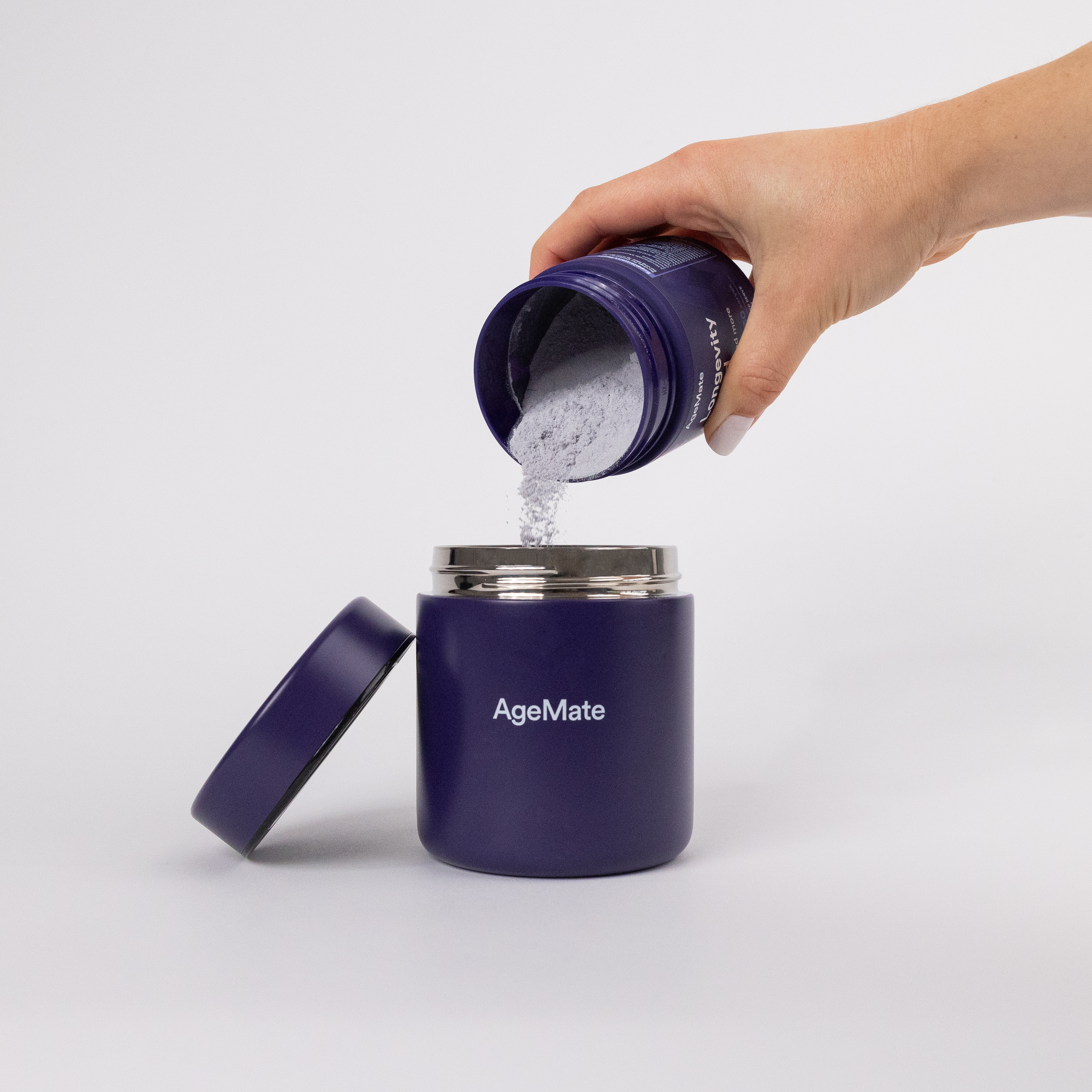Key Takeaways
-
Glycation silently damages your skin and internal tissues—but it’s reversible through dietary choices.
-
A happy gut equals a younger body. Boosting microbiome diversity can reduce inflammation and even improve mood.
-
Mitochondrial health is the real “engine of youth.” Supporting your mitochondria slows biological ageing from the inside out.
Did you know the age of your cells might not match what’s on your birth certificate? Scientists now understand that ageing is more than grey hairs or laugh lines. In fact, some of the most powerful drivers of ageing happen at a microscopic level—often before you feel a thing.
What’s more exciting? Many of these hidden processes can be slowed—or even reversed—through lifestyle changes. This blog dives into five of the lesser-known causes of ageing and how you can take charge of them to feel energised, vital and youthful for longer.
1. Glycation: Is Sugar Ageing You From the Inside Out
Before we jump to the skin creams, let’s talk sugar. Glycation is a process where excess sugar binds to proteins or fats in your body, forming harmful molecules called AGEs—Advanced Glycation End-products.
These AGEs damage collagen and elastin, two proteins responsible for keeping your skin firm and supple. But that’s not all—they also stiffen blood vessels, damage nerves and contribute to chronic disease (R).
The surprising part? Glycation speeds up when blood sugar levels are consistently high—think regular white bread, sweetened drinks, or even frequent snacking.

To fight back:
-
Dose up on antioxidants: Berries, cinnamon, and green tea help neutralise AGEs.
-
Choose low-GI foods: Whole grains and legumes release sugar more slowly, protecting your tissues. Think quinoa, chickpeas, and authentic sourdough.
-
Consider alpha-lipoic acid: This powerful antioxidant has been shown to inhibit glycation reactions (R).
You don’t need to give up every treat—just make smarter swaps and focus on whole foods. Your skin, joints, and heart will thank you.
2. Mitochondrial Decline: Your Cellular Powerhouse
Mitochondria are tiny structures inside your cells that convert food into energy. As you age, they naturally become less efficient. This decline is linked with fatigue, slower healing, and even age-related diseases like Parkinson’s and Alzheimer’s (R).
But mitochondrial health isn’t set in stone. The great news is, you can support and even rejuvenate these powerhouses through smart lifestyle choices.
Here’s how:
-
Exercise regularly, especially HIIT or strength training: These trigger the production of new mitochondria (R).
-
Get your CoQ10: Found in sardines, beef liver, and supplements, this nutrient supports mitochondrial energy production (R).
-
Try intermittent fasting: Studies show fasting triggers mitophagy, the clean-up of old or damaged mitochondria (R, R).
Protecting your mitochondria is like fuelling your body’s engine. When your cells hum with energy, every part of you—from your brain to your muscles—feels younger.
3. Microbiome Diversity: The Gut-Ageing Connection
You might not expect your gut bacteria to have anything to do with wrinkles or memory—but they do. A diverse microbiome plays a surprising role in slowing the ageing process.
Research shows that older adults with rich microbial diversity experience lower inflammation, better immunity, and improved cognitive function (R).
Sadly, modern diets and antibiotics often reduce diversity, allowing less helpful bacteria to dominate.
To enrich your microbiome:
-
Eat fermented foods: Think yoghurt, kefir, kimchi, and miso.
-
Feed your good bugs: Fibre-rich foods like oats, artichokes, and flaxseed keep helpful bacteria thriving.
-
Spend time in nature: Soil exposure and outdoor time help reintroduce microbial diversity—yes, gardening counts!)(R).

Your gut is talking to your brain, your immune system, and even your mood. Feed it well, and you’ll feel the benefits from head to toe.
4. Chronic Inflammation: The Silent Fire Behind Ageing
Chronic, low-grade inflammation is often called “inflamm-ageing”—a key factor that accelerates cellular wear and tear. It’s linked with conditions like arthritis, heart disease, and even some cancers (R). You might not feel it, but inside, your immune system could be in overdrive.
This silent inflammation often stems from lifestyle factors: poor sleep, high sugar intake, lack of movement, and unmanaged stress.
Luckily, inflammation is highly modifiable:
-
Embrace the Mediterranean diet: Rich in healthy fats, greens, and omega-3s, it reduces inflammation markers (R).
-
Get enough sleep: Quality sleep lowers inflammatory cytokines (R).
-
Practice mindfulness or gentle yoga: These reduce cortisol, a stress hormone linked to inflammation (R).
Keeping inflammation in check doesn’t just prevent disease—it also helps maintain supple skin, strong joints, and better mood.
5. Cellular Senescence: When Cells Stop Working but Don’t Die
If your body were a workplace, all the other cells would disapprove of the senescent cells' work ethic. They stop doing their jobs but stick around, causing trouble. Instead of dividing or dying, they linger and release harmful substances that promote inflammation and damage nearby cells.
The build-up of these “zombie cells” is linked to everything from skin sagging to cognitive decline (R). But research shows you can reduce their impact.
Here’s how:
-
Eat senolytic foods: Quercetin (found in apples and onions) and fisetin (in strawberries) help eliminate senescent cells (R).
-
Exercise consistently: Movement activates pathways that clear out cellular debris.
-
Try intermittent fasting: Another reason to give your digestive system a break—fasting may trigger autophagy, a clean-up process that helps your body remove damaged cells.

While we can’t avoid all cellular ageing, we can certainly tidy up the mess it leaves behind.
Feeling Younger Starts at the Cellular Level
If you’ve ever wondered why two people the same age can look—and feel—so different, the answer often lies below the surface. Processes like glycation, inflammation, and mitochondrial decline may sound complex, but the daily habits that influence them are surprisingly simple.
You don’t need to turn your life upside down to start reversing these hidden signs of ageing. Just a few tweaks—a walk outside, a handful of berries, a better night’s sleep—can set powerful change in motion.
Ageing may be natural—but how you age is up to you. Start with your diet. Start by reading our blog: Crafting Your Breakfast for Longevity.





